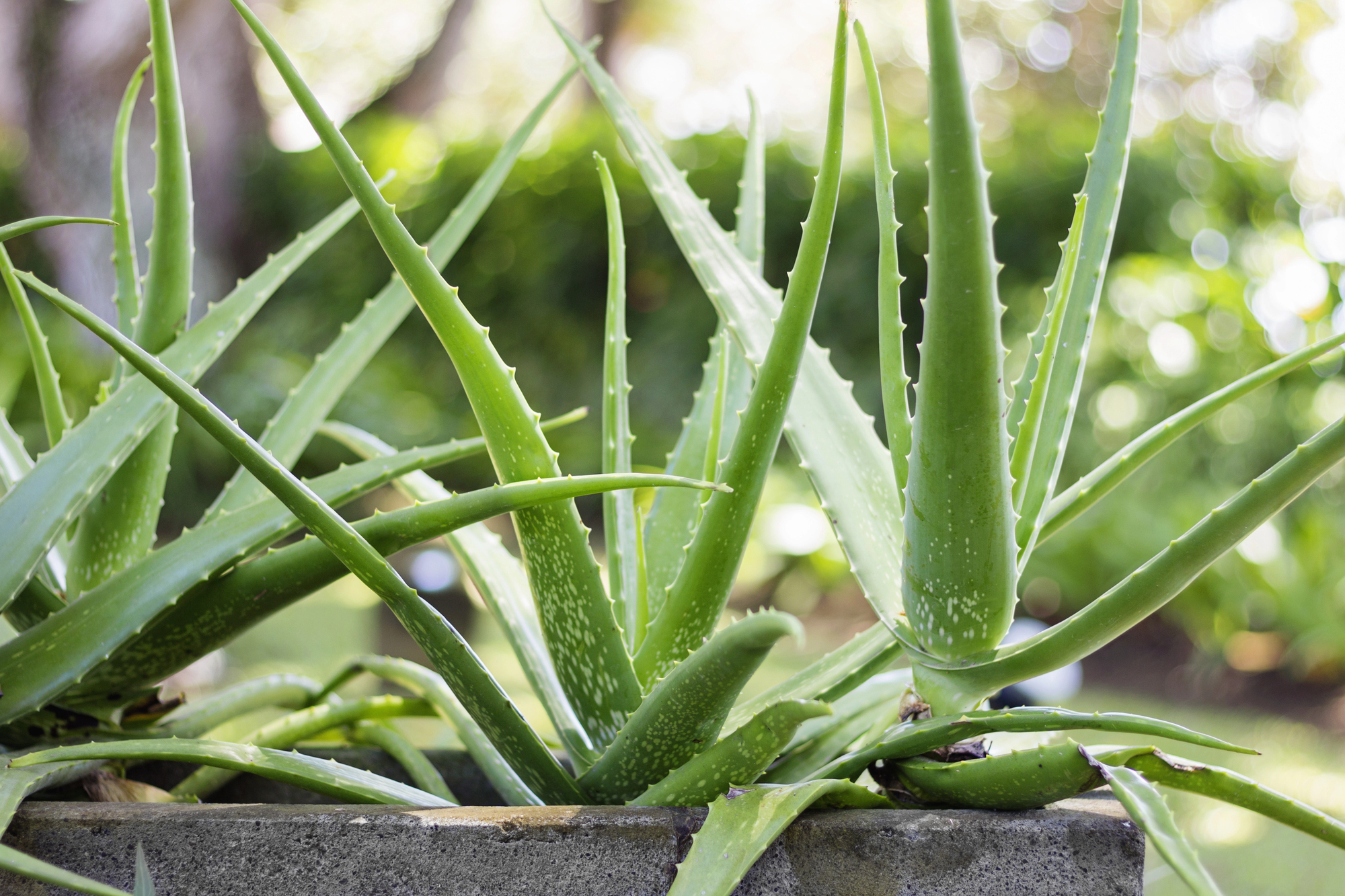Aloe vera plants thrive with moderate sun exposure. These succulents prefer bright, indirect light for 6-8 hours daily. Too much direct sunlight can damage their leaves, causing them to turn brown or yellow.
Indoor aloe vera plants do well near windows that receive filtered light. Outdoors, they benefit from morning sun and afternoon shade. In hot climates, aloe vera may need protection from intense midday sun.
Proper light is crucial for aloe vera’s health and growth. While they can tolerate some shade, insufficient light leads to weak, leggy plants. Balancing sun exposure helps maintain the plant’s compact shape and vibrant green color.
The Light Needs of Aloe Vera
Aloe vera plants thrive with specific light conditions that mimic their native environment. Proper sunlight exposure is key to their growth and health.
Understanding Aloe Vera’s Natural Habitat
Aloe vera originates from arid regions of Africa and the Arabian Peninsula. These areas receive intense sunlight for long periods. The plants have adapted to survive in bright, sunny conditions.
In their natural habitat, aloe vera often grows under the partial shade of larger plants or rock formations. This provides some protection from the harshest midday sun.
Sunlight Requirements and Light Intensity
Aloe vera plants prefer bright, indirect sunlight. They can tolerate full sun but may need gradual acclimation to prevent sunburn.
4-6 hours of direct sunlight per day is ideal for most aloe vera plants. Morning sun is gentler and less likely to cause damage than afternoon sun.
Indoor aloe vera plants benefit from placement near a south or west-facing window. This ensures they receive adequate light throughout the day.
| Light Condition | Suitability |
|---|---|
| Full Sun | Good (with acclimation) |
| Partial Shade | Ideal |
| Full Shade | Poor |
Signs of Proper Sunlight Exposure
Healthy aloe vera plants have thick, upright leaves with a blue-green color. The leaves may develop a slight reddish tinge when exposed to bright light.
Insufficient light can cause aloe vera to become leggy and pale. The leaves may stretch and thin out as the plant searches for more light.
Too much direct sunlight can lead to sunburn, appearing as brown or white spots on the leaves. If this occurs, move the plant to a slightly shadier spot.
Regular monitoring of leaf color and growth patterns helps ensure optimal light conditions for aloe vera plants.
Effects of Sunlight on Aloe Vera Health
Sunlight plays a crucial role in the health and growth of aloe vera plants. The amount and intensity of light exposure directly impact their development, appearance, and medicinal properties.
Benefits of Adequate Sunlight
Aloe vera plants thrive in bright, indirect sunlight. Proper light exposure supports photosynthesis, enabling the plant to produce energy and maintain its succulent leaves. Sufficient sunlight promotes robust growth and helps aloe vera develop its characteristic thick, fleshy leaves.
Adequate light also enhances the plant’s medicinal properties. Aloe vera exposed to appropriate levels of sunlight produces higher concentrations of beneficial compounds in its gel. These substances contribute to its healing and soothing effects.
Sunlight exposure influences the plant’s color as well. With the right amount of light, aloe vera leaves maintain their attractive green hue and may develop a slight reddish tinge, indicating good health.
Risks of Too Much Direct Light
While aloe vera plants need light, excessive exposure can be harmful. Direct, intense sunlight, especially during hot summer months, may cause sunburn on the leaves. Signs of sunburn include brown or yellow patches on the foliage.
Overexposure to strong light can lead to dehydration. Aloe vera plants may lose moisture faster than they can replenish it, resulting in shriveled, dry leaves. This stress can weaken the plant and make it more susceptible to pests and diseases.
In extreme cases, prolonged exposure to harsh sunlight can cause irreversible damage to the plant’s tissues. The leaves may become bleached, losing their green color and ability to photosynthesize effectively.
Consequences of Low Light Conditions
Insufficient light can significantly impact aloe vera’s growth and health. In low light environments, the plant’s growth rate slows down considerably. New leaves may emerge smaller and thinner than usual.
Lack of light affects the plant’s overall structure. Aloe vera in dim conditions often becomes leggy, with elongated stems stretching towards light sources. This results in a weak, unstable plant with poor form.
Low light also reduces the concentration of beneficial compounds in aloe vera gel. The plant’s medicinal properties may be less potent when grown in inadequate light conditions.
To compensate for low natural light, grow lights can be used. These artificial light sources can supplement or replace natural sunlight, helping aloe vera plants thrive indoors or in shaded areas.
Indoor and Outdoor Growing Considerations
Aloe vera plants can thrive in both indoor and outdoor environments with proper care and light exposure. The key is providing the right amount of sunlight and adjusting watering based on the plant’s location.
Positioning Aloe Vera Indoors
Aloe vera plants prefer bright, indirect light when grown indoors. Place them near a window that receives plenty of natural light throughout the day. East-facing windows are often ideal, as they provide gentle morning sun without the intense afternoon heat. If using a south-facing window, position the plant slightly away from the glass to avoid scorching.
Rotate the pot every few weeks to ensure all sides of the plant receive equal light exposure. This promotes even growth and prevents the aloe from leaning towards the light source. If natural light is limited, supplement with grow lights to maintain healthy growth.
The Best Windows for Aloe Vera Plants
East-facing windows are typically the best option for aloe vera plants. They offer bright, filtered sunlight in the morning hours, which is perfect for these succulents. South-facing windows can also work well, but may require some shading during peak summer months to prevent leaf burn.
West-facing windows can be suitable if the plant is placed a few feet away from the glass to avoid intense afternoon sun. North-facing windows generally don’t provide enough light for aloe vera to thrive, unless supplemented with artificial lighting.
Outdoor Aloe Vera Plant Care
Outdoor aloe vera plants need protection from direct sunlight, especially during hot summer afternoons. Choose a spot that receives partial shade, such as under a tree or on a covered patio. Morning sun and afternoon shade create ideal growing conditions for outdoor aloes.
In regions with harsh winters, bring potted aloe vera plants indoors when temperatures drop below 50°F (10°C). For in-ground plants, provide frost protection with covers or mulch. Water outdoor aloes less frequently than indoor plants, as they’re more exposed to natural rainfall and environmental moisture.
Caring for Aloe Vera Throughout the Seasons
Aloe vera plants require different care as the seasons change. Light exposure and temperature adjustments are key to maintaining healthy plants year-round.
Seasonal Sunlight and Temperature Changes
Aloe vera prefers bright, indirect light. In spring and summer, place plants near south or west-facing windows. Move them back slightly if leaves show signs of scorching. During fall and winter, increase light exposure by moving closer to windows.
Ideal temperatures range from 55-80°F (13-27°C). Protect plants from cold drafts and frost in winter. Move outdoor plants inside when temperatures drop below 50°F (10°C).
Water needs vary by season. In spring and summer, water thoroughly when soil is dry 1-2 inches deep. Reduce watering in fall and winter as growth slows. Always ensure good drainage to prevent root rot.
Adjusting Light Exposure in Extreme Weather
During heatwaves, move aloe vera to areas with filtered shade or partial sun. Use sheer curtains to diffuse intense direct sunlight through windows. This prevents leaf burn while still providing adequate light.
In prolonged cloudy or rainy periods, supplement with grow lights. Place lights 6-12 inches above plants for 12-14 hours daily. This maintains growth and prevents etiolation (stretching) from lack of light.
For indoor plants, rotate pots weekly to ensure even light exposure on all sides. This promotes balanced growth and prevents leaning toward light sources.
Advanced Tips for Aloe Vera Enthusiasts
Experienced aloe vera growers can enhance their plant care techniques with specialized approaches. These methods focus on optimizing light conditions and understanding plant aging.
Utilizing Artificial Light Effectively
Artificial lights offer precise control over light exposure for aloe vera plants. LED grow lights are energy-efficient and provide specific wavelengths beneficial for aloe growth. Position lights 6-12 inches above plants, adjusting as they grow.
A timer can automate light cycles, mimicking natural day-night patterns. Start with 12-14 hours of light daily, monitoring plant response. Increase or decrease duration based on growth and leaf color.
For compact growth, use a combination of red and blue light. Red light promotes flowering, while blue light encourages leaf development. Some growers add white light for better visual assessment of plant health.
Maximizing Growth with Light Manipulation
Strategic light manipulation can shape aloe vera growth patterns. Rotating plants quarterly ensures even exposure and balanced growth. This prevents leaning and promotes symmetry.
Gradual changes in light intensity prepare aloes for outdoor transitions. Start with 1-2 hours of direct sunlight, increasing by 30 minutes daily. This hardening process prevents sunburn and stress.
In low-light areas, reflective surfaces amplify available light. White walls or reflective panels positioned near plants can increase light absorption. This technique is particularly useful for aloes in north-facing windows or shaded spots.
Identifying the Signs of Aging in Aloe Plants
Older aloe plants often require adjusted care routines. Leaf thinning is a common age-related change. Prune yellowing or thin leaves to redirect energy to healthier growth.
Root-bound aloes may need repotting every 2-3 years. Signs include slowed growth, roots emerging from drainage holes, and soil drying quickly. Choose a pot 1-2 inches larger in diameter when repotting.
Mature aloes might produce offsets less frequently. To encourage new growth, ensure proper nutrition with a balanced, low-nitrogen fertilizer applied monthly during growing seasons. Reduce fertilizer for plants over 10 years old to prevent overgrowth.
You may also like…





